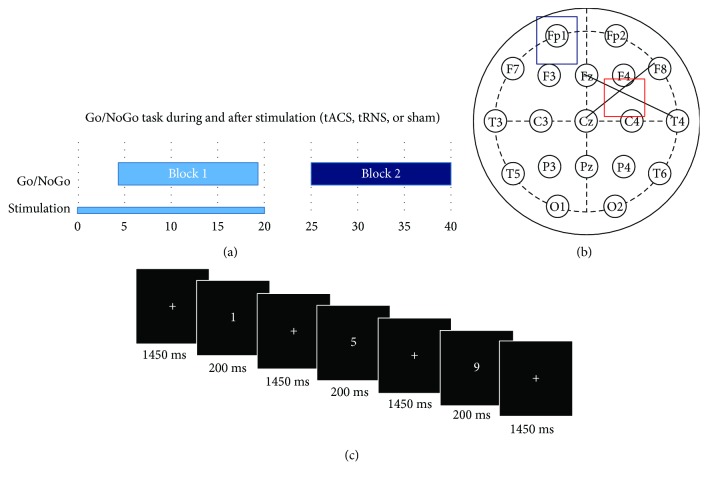Figure 1.
Experimental design. (a) Time course of the experiment: in each of the sessions, the subjects completed a 2 min practice and afterwards two blocks of 15 min each of a Go/NoGo paradigm. Stimulation took place during the first block of the paradigm, followed by a resting period of 5 min and the second block without stimulation. The task started 4.5 min after the beginning of the stimulation. (b) Electrode setup: active stimulation (5 × 5 cm) electrode was placed above rIFG, which was identified as the crossing point between T4-Fz and F8-Cz. The return electrode (5 × 7 cm) was placed above Fp1 following the international 10–20 system. (c) Go/NoGo task: subjects were asked to respond to stimuli as quickly as possible by pressing a button as soon as a digit between 1 to 4 or 6 to 9 appeared (“Go” stimuli) and were told to withhold a button press when a “5” appeared (“NoGo” stimuli). Participants were instructed to keep their eyes focused on the fixation cross and to avoid any movement during the acquisition. Each stimulus was displayed for 0.2 s with an average interstimulus interval of 1.45 s (randomly jittered between 1.3 and 1.6 s).

